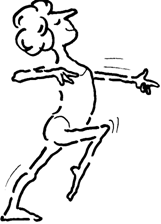- TOOL KITS
- A. The NEXT Step
- B. Promoting Independence
- C. Phone Apps
- D. Return to Work
- E. Motivational Interviewing
- F. Paediatric Brain Injury Rehabilitation Resources
- a) Introduction
- 0. Introduction
- 1. Working together promoting independence
- 2 . Using this kit
- b) Issues, goals, action
- 3. Identifying issues W
- 4. Setting goals W
- 5. Making goals happen W
- 6. Monitoring progress W
- c) Strategies Myself and my relationships
- 7. My behaviour's changed W
- 8. Thinking
- 9. Relationships W
- 10.Conversations
- Managing memory, money and time
- 11. Remembering information and messages
- 12. Finances and handling money W
- 13. Managing time W
- Household tasks
- 14. Food and shopping W
- 15. Food and meals W
- 16. House keeping
- 17. Laundry
- Getting around
- 18. Public transport W
- 19. Accessing the community
- Life tasks
- 20. Self care
- 21. Fitness
- 22. Leisure
- 23. Employment
- 24. Continue learning
- 25. Health and well-being
- Emergencies
- 26. Emergencies
21. Fitness
How do I improve my fitness?
Reduced fitness is caused by a lack of physical activity. This is a common problem after traumatic brain injury, particularly when people have difficulty moving or making time to exercise.
Regular exercise improves fitness, so that you can do more before you start feeling tired. Exercise can also make you healthier by lowering your blood pressure, preventing heart disease, keeping your bones strong and helping to control your weight.

Strategies for action
Exercise needs to be regular. The best current advice from the American College of Sports Medicine is:
HOW OFTEN? 3-5 days every week
HOW HARD? either light or moderate
HOW LONG? for light exercise - a total of 40 - 60 minutes (this can be 4 to 6 lots of 10 minutes) for moderate exercise - 20 minutes.
When you are getting started on your fitness program it is best to use light exercise (e.g., walking at a speed that does not make you puff). When you are working out regularly, you can then increase to moderate exercise (e.g., walking fast enough to make you breathe heavily).
There are many different types of exercise, including walking, jogging, climbing stairs, swimming, riding an exercise bike and going to a gym.
Helpful hints
Timetable exercise into your week.
If you get bored when you are exercising, try doing a different type of exercise or exercising with a friend.
If you are very unfit, you should get a checkup from your GP before you start exercising. If you have chest pain, vomiting, nausea or severe cramping pains in the legs when you exercise STOP EXERCISING and see your doctor.
If you have problems moving because of your head injury, you should get some advice from your physiotherapist about:
- the type of exercise that is best for you
- how hard you should exercise, and
- how often you should exercise.
Sky's experience
Sky's physiotherapist helped her get started on an exercise program. This involved doing moderate exercise for 20 minutes a day, 5 days each week. Sky chose to do a combination of walking and riding an exercise bike. She went for a long walk with her husband after dinner 2 days each week - they walked fast enough to work up a sweat and puff. On the other three days she rode her exercise bike before going to work. The bike had a special attachment to monitor her heart rate, and the monitor made a beeping noise if she wasn't exercising hard enough. To avoid boredom, Sky listened to the radio while she rode the exercise bike. After 4 weeks of regular exercise Sky said "I can walk so much further now and don't get tired".
Who can help me with my fitness?
The physiotherapist at your local Brain Injury Rehabilitation Unit will be able to help you develop an exercise program to improve your fitness if you have difficulty moving.
The fitness trainer at your local gym or your GP may also be able to help you get started.
